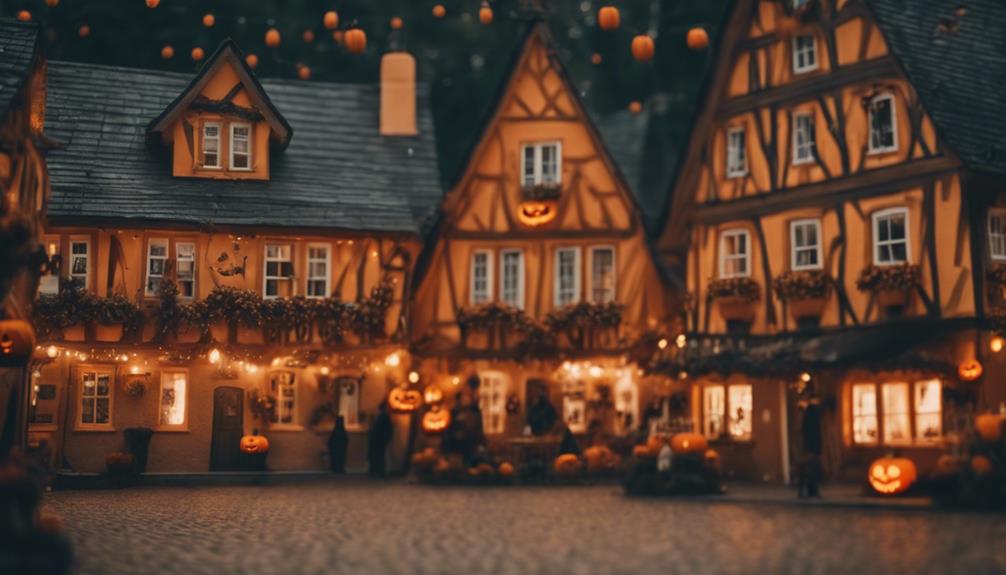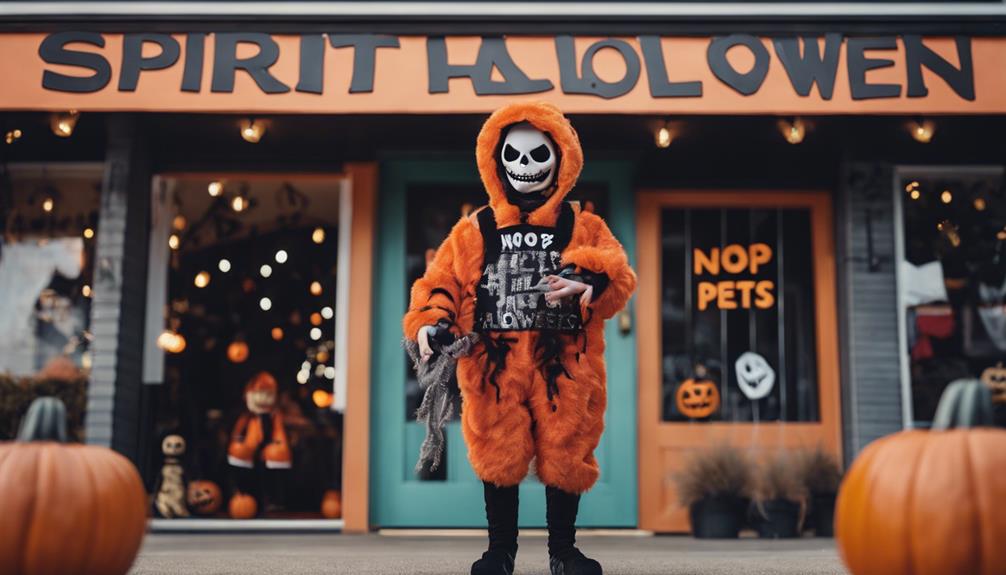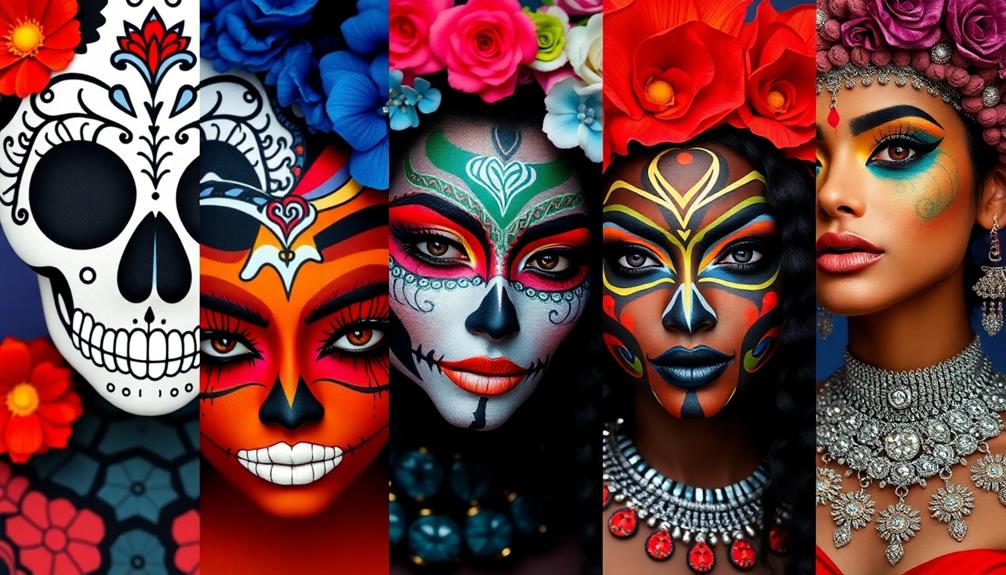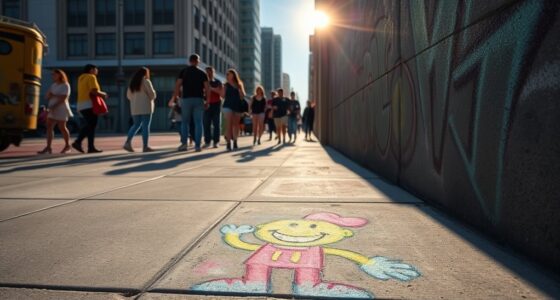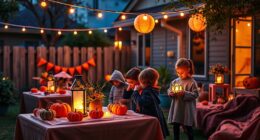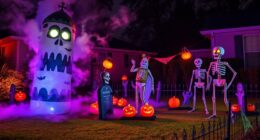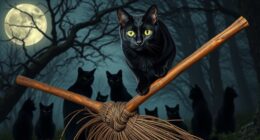Germany celebrates Halloween as a cultural boost introduced in 1991, blending local customs with global traditions to create themed parties and events. Dieter Tschorn's influence shaped this fusion by compensating for canceled Fasching celebrations. The effective marketing strategies helped this tradition endure, appealing to a wide audience with spooky costume parties, trick-or-treating, and intricate events like the Burg Frankenstein and LEGOLAND Halloween events. As Halloween integrates into German culture, it sparks debates on commercialization while adapting spooky themes and costumes. The celebration has evolved, drawing young Germans in with its unique mix of old and new.
Key Takeaways
- Halloween was introduced in Germany in 1991 to revitalize cultural celebrations.
- It was a blend of German and Halloween traditions, popularized through marketing efforts.
- Dieter Tschorn, a PR consultant, played a significant role in shaping Halloween traditions in Germany.
- Halloween events in Germany cater to diverse preferences, including spooky costume parties and trick-or-treating.
- Cultural integration and commercialization controversies surround the celebration of Halloween in Germany.
History of Halloween in Germany
The introduction of Halloween in Germany in 1991 marked a significant shift in the country's cultural celebrations, aimed at revitalizing festivities amidst canceled traditional events. This move brought a blend of German celebration and Halloween traditions to the forefront, creating a unique mix of cultural influences. Initially introduced as a commercial celebration by Dieter Tschorn to compensate for the losses suffered by retailers during the canceled Fasching season, Halloween quickly gained popularity across the country.
The incorporation of Halloween into German culture saw the emergence of themed parties and events, showcasing a fusion of American influences with local traditions. Despite some cultural discontent due to the coexistence of Halloween with traditional celebrations like St. Martins Day, the holiday's lasting impact in Germany is undeniable. The success of Halloween in Germany can be attributed to both the effective marketing strategies of individuals like Dieter Tschorn and the appeal of the festivities to a wide audience, making it a cherished part of the country's cultural calendar.
Influence of Dieter Tschorn
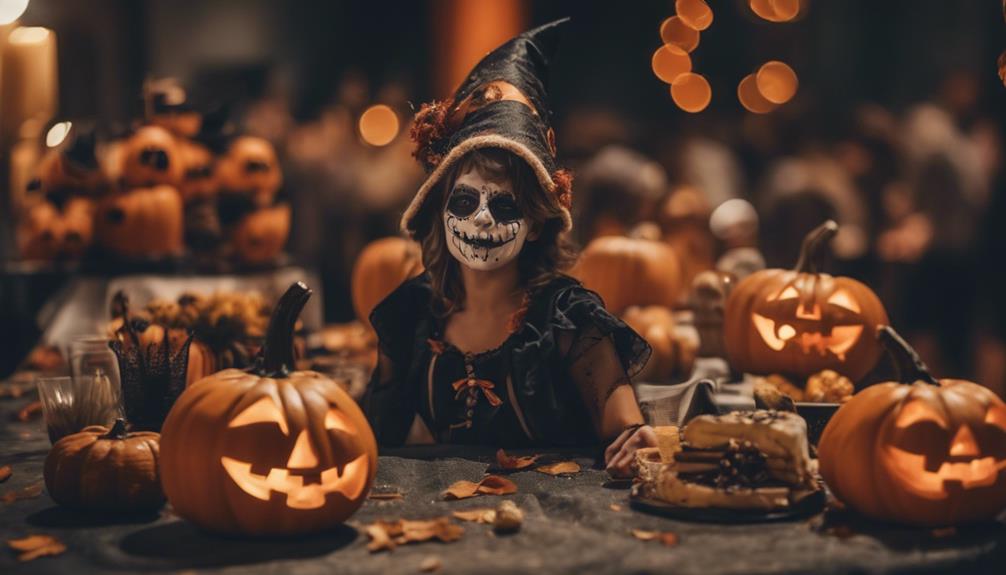
Dieter Tschorn, a PR consultant, had a significant impact on Halloween's introduction in Germany in 1991. His efforts aimed to compensate for the void left by canceled Fasching celebrations and helped popularize the holiday in the country.
Tschorn's influence continues to shape Halloween traditions in Germany, evident through the themed parties and events held nationwide.
Dieter Tschorn's Impact
Why did introducing Halloween in Germany in 1991 by Dieter Tschorn have such a significant impact on the country's holiday traditions?
Dieter Tschorn, a German Toy and Novelty expert, saw an opportunity to fill the void left by canceled Fasching celebrations and boost sales for retailers. By promoting Halloween, Tschorn inadvertently sparked a trend that led to the holiday's growing popularity in Germany.
His strategic marketing efforts successfully positioned Halloween as a celebrated event, evident through the plethora of themed parties and events now held annually across the country. Tschorn's vision and initiative not only provided a fun alternative for the community but also paved the way for a new tradition to take root in German culture.
Thanks to his influence, Halloween has become a widely embraced holiday in Germany, enriching the country's festive calendar with a touch of spooky excitement.
Cultural Influence
Introducing Halloween in Germany in 1991, Dieter Tschorn greatly influenced the country's holiday traditions and cultural landscape. As a German PR consultant, Tschorn's cultural influence was profound, sparking a shift in how Germans celebrate festivities.
By bringing Halloween to Germany to compensate for canceled Fasching celebrations, Tschorn aimed to assist retailers in recovering lost sales during the absence of traditional Carnival festivities. His marketing efforts were pivotal in popularizing Halloween across the country, showcasing his ability to shape cultural trends.
Thanks to Tschorn's initiatives, Halloween became an integral part of the German festive calendar, demonstrating how one individual's actions can have a substantial impact on a nation's customs. The German cultural scene was forever altered by Tschorn's decision to introduce Halloween, highlighting his lasting legacy in shaping holiday traditions.
His influence not only diversified the celebratory landscape but also showcased the adaptability of German culture to incorporate new customs.
Halloween Traditions in Germany
Halloween traditions in Germany have been greatly influenced by Dieter Tschorn's introduction of the holiday in 1991. The impact of Tschorn's marketing strategies and the blend of Americanization have shaped how Halloween is celebrated in Germany. Here are some key traditions and aspects of Halloween in Germany:
- Tschorn introduced Halloween in response to canceled Fasching celebrations, aiming to boost sales for retailers.
- The popularity of Halloween in Germany is a result of Tschorn's marketing efforts and the influence of Americanization.
- The presence of numerous Halloween-themed parties and events indicates the holiday's lasting acceptance in Germany.
- Cultural conflicts may arise as Halloween traditions sometimes overlap with St. Martins Day, leading to discontent.
- Tschorn's pivotal role in bringing Halloween to Germany highlights the significant impact of marketing strategies on shaping holiday traditions.
These elements showcase how Halloween has become a part of German culture, blending influences from both traditional German celebrations and modern marketing strategies.
Impact on German Culture
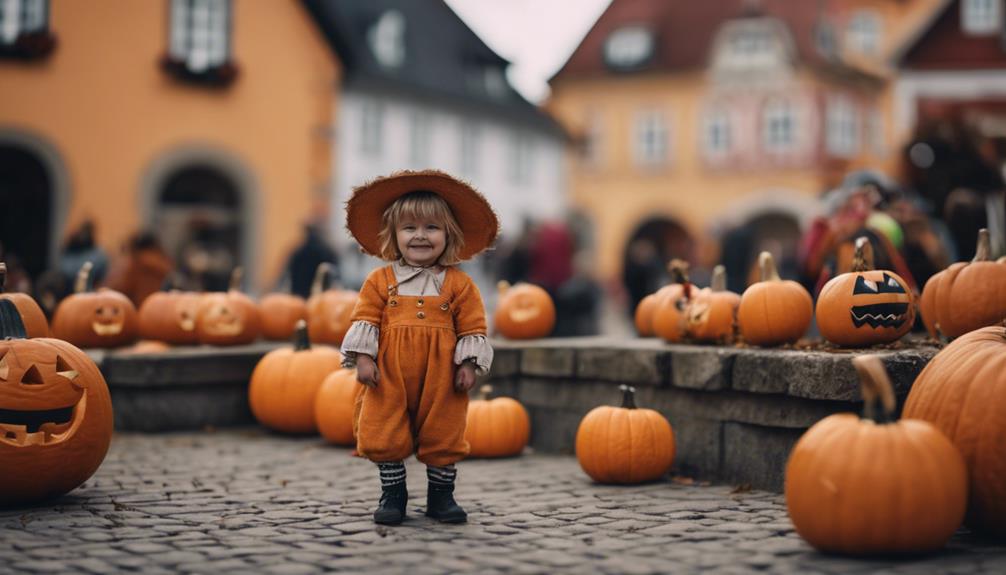
The introduction of Halloween in Germany in 1991 had a significant impact on the country's cultural landscape, especially in relation to traditional festivals like Fasching and St. Martins Day. Halloween decorations started to appear in stores and homes, offering a new way to celebrate amidst the cancellation of Fasching festivities. However, this overlap with St. Martins Day led to cultural discontent and conflicts, as some saw Halloween as overshadowing the more traditional St. Martins Day celebrations.
One noticeable change in German culture was the shift in costume themes. While Halloween costumes in Germany typically leaned towards spooky and scary designs, contrasting with the fantasy characters often seen in other countries. The coexistence of Halloween and Reformation Day in Germany added a unique cultural richness to the holiday calendar, showcasing the country's diverse traditions. The increasing number of Halloween-themed parties and events in Germany indicates the lasting presence and popularity of the holiday, influencing how Germans engage with and celebrate this spooky occasion.
Comparison With Carnival
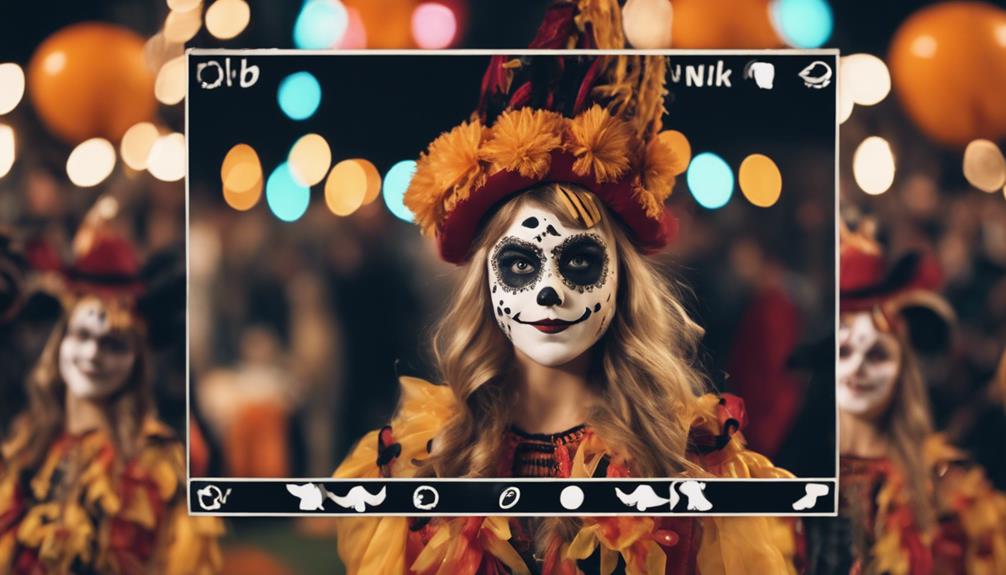
In Germany, the contrast between Carnival and Halloween highlights a distinct shift in cultural celebration styles and themes. When comparing the two events, you can see the following differences:
- Carnival: A larger celebration with colorful costumes and parades.
- Halloween: Gained popularity in 1991 due to the cancellation of Carnival, focusing more on evening parties and themed events rather than daytime festivities.
- Carnival: Known for joyful and colorful costumes.
- Halloween: Features spooky and scary costumes that differ from Carnival's traditional attire.
- Some Germans: View Halloween as a commercialized American import displacing traditional German cultural celebrations like Carnival.
These differences in costumes and celebration styles between Carnival and Halloween in Germany reflect the shift in cultural preferences and influences over time. While Carnival remains a significant cultural event, Halloween has found its place in German society, offering a different kind of festive experience with its themed parties and spooky costumes.
Growing Popularity Among Youth
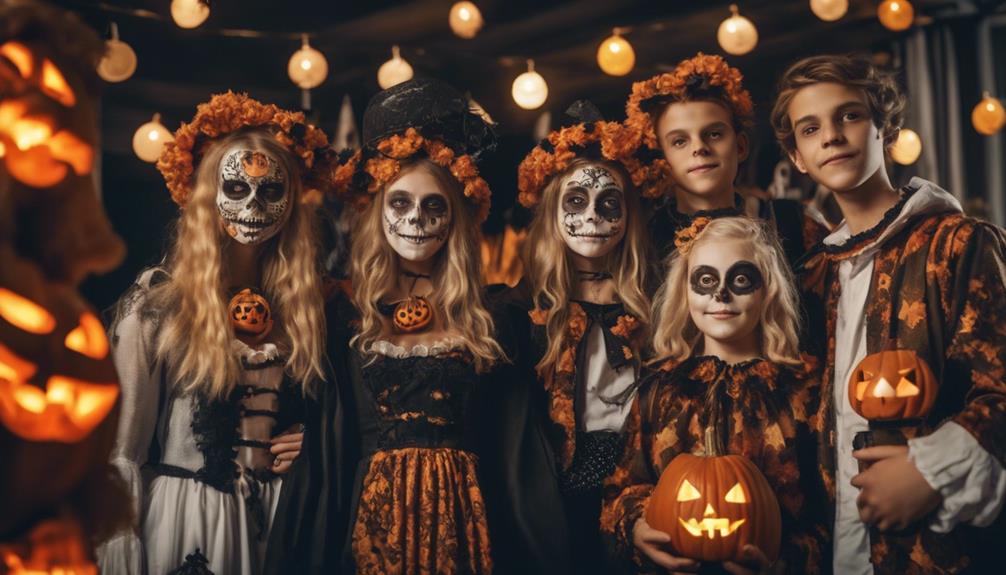
Amidst the cultural landscape of Germany, the growing popularity of Halloween among youth signifies a notable shift in festive preferences within the younger demographic. While only 18% of Germans celebrate Halloween, the younger generation is increasingly embracing this tradition.
Dressing up in spooky and eerie costumes has become a common practice among German youth during Halloween. Unlike in the US, where joyful costumes are prevalent, German Halloween costumes tend to lean towards the macabre. Adults in Germany typically don't dress up for work on Halloween; instead, they focus on evening parties and events.
Trick-or-treating isn't widespread in urban areas of Germany, but certain neighborhoods with expats may partake in this tradition. The appeal of Halloween among young Germans reflects a blending of cultural influences and a desire to engage in a fun and spooky celebration.
This shift highlights how Halloween is becoming more integrated into the social fabric of German youth, offering them a chance to express themselves creatively through costumes and celebrate Halloween in their unique way.
Commercialization Controversy
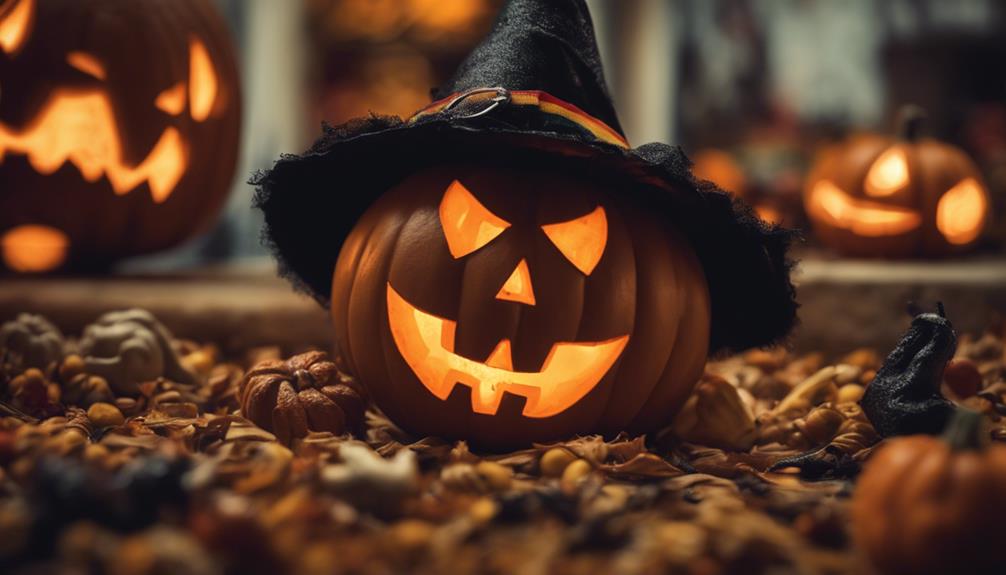
Considering the prevailing perception of Halloween as a commercialized celebration in Germany, it has sparked significant controversy among the populace. This controversy stems from various factors, including concerns about cultural appropriation, impact on traditional celebrations, and the profit-driven nature of the holiday. Here are five key points to paint a clearer picture:
- 65% of Germans view Halloween as a commercial celebration, indicating a widespread perception of its profit-driven nature.
- 48% of Germans believe Halloween is an American import displacing German cultural traditions, highlighting concerns about cultural appropriation.
- Some argue that Halloween conflicts with the traditional St. Martins celebration in Germany, sparking cultural and religious debates.
- Germany had a tradition of carving and lighting beets before Halloween gained popularity, showcasing a historical contrast in Halloween customs.
- Halloween is seen as a controversial celebration in Germany due to its perceived commercialization and impact on local traditions.
These factors contribute to the ongoing debate surrounding Halloween in Germany, reflecting a mix of cultural, historical, and commercial considerations.
Halloween Events and Festivities
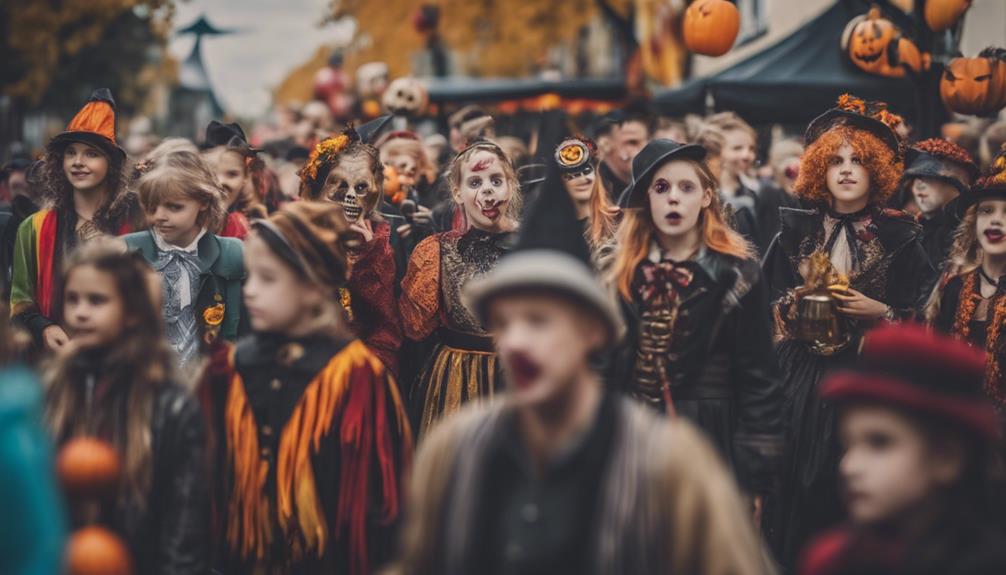
Halloween in Germany brings a mix of popular traditions, from spooky costume parties to trick-or-treating. The country hosts a variety of Halloween events catering to different preferences and age groups, showcasing the widespread celebration of the holiday.
Whether you're into haunted houses, parades, or pumpkin carving, Germany offers a diverse range of festivities to enjoy during this spooky season.
Popular Halloween Traditions
With various haunted attractions and themed events across Germany, the country offers a diverse range of popular Halloween traditions for all ages to enjoy. Here are some of the most exciting Halloween events and festivities in Germany:
- Burg Frankenstein Halloween Event: Experience one of the oldest and most renowned Halloween events near Darmstadt, featuring chilling atmospheres with actors and haunting sounds.
- Mayen Market Festival of Magic: Join the celebration in the Eifel region with a parade, pumpkin carving, costumes, and beer, adding to the Halloween spirit.
- Movie Park Horror Fest: Near Essen, this event has been thrilling attendees for 20 years with scary attractions and entertainment for all Halloween enthusiasts.
- LEGOLAND Halloween Event: Enjoy a family-friendly Halloween at LEGOLAND in Germany with free park admission for costumed children on October 31st.
- Diverse Halloween Events: From spooky to fun-filled, Germany's Halloween events cater to different preferences and age groups, showcasing the growing popularity of Halloween celebrations in the country.
Spooky Costume Parties
Prepare to immerse yourself in the spine-chilling world of spooky costume parties during Germany's Halloween events and festivities. Halloween in Germany is primarily celebrated through adult-focused events featuring haunted houses, eerie decorations, and scary activities. These spooky costume parties offer participants a chance to step into immersive experiences filled with thrills and excitement. From costume contests to themed drinks and live music, these gatherings provide a chilling atmosphere for all attendees.
Popular Halloween events in Germany, such as the Frankenstein Castle party, Movie Park's Horror Fest, and the Ludwigsburg Pumpkin Festival, showcase the country's dedication to creating a spooky ambiance for Halloween celebrations. Attendees can expect to encounter a variety of themed events that cater to those seeking a frighteningly good time. Whether you're exploring a haunted house or sipping on a spooky cocktail, Germany's Halloween parties promise an unforgettable experience filled with scares and surprises.
Trick-or-treating in Germany
Immerse yourself in a different side of Halloween celebrations in Germany by exploring the practice of trick-or-treating in various neighborhoods. Here are some insights into trick-or-treating and Halloween events in Germany:
- Trick-or-treating isn't as common in Germany, particularly in urban areas where Halloween is more about attending themed parties.
- Some neighborhoods with expats have started to adopt the tradition of trick-or-treating, offering a mix of German and international Halloween experiences.
Halloween events in Germany often revolve around themed parties at local bars, providing a lively atmosphere for revelers. Larger events like the Frankenstein Castle party draw crowds looking for a more extravagant Halloween celebration.
For a different experience, the Ludwigsburg Pumpkin Festival offers a family-friendly Halloween experience with activities centered around pumpkins and fall festivities.
Cultural Adaptations in Germany
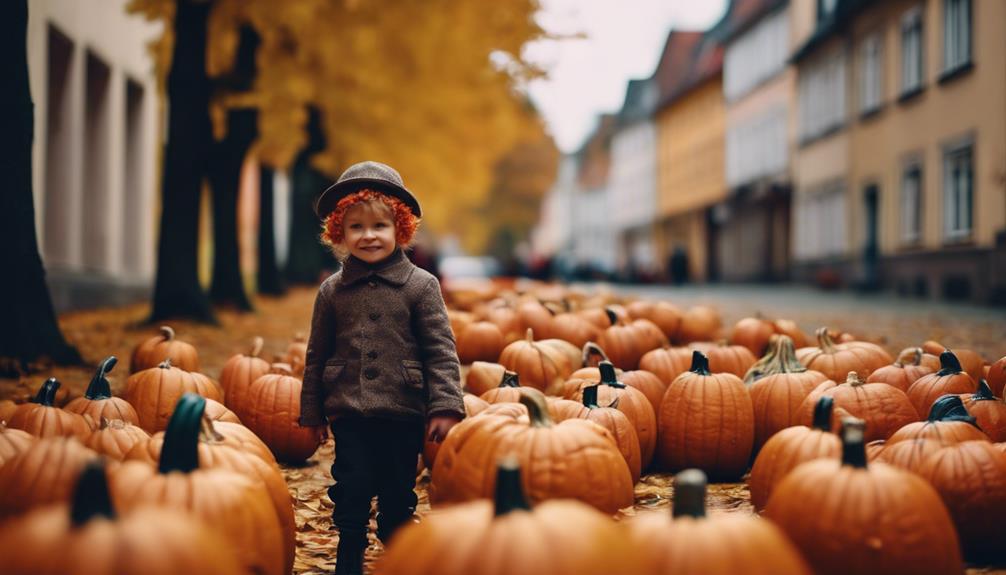
Reflecting a blend of traditions, Germany's cultural adaptations to Halloween emphasize spooky themes and scary costumes. The introduction of Halloween in Germany in 1991 was primarily driven by marketing strategies to compensate for canceled Fasching celebrations. This cultural adaptation has led to a unique fusion of Halloween traditions with those of St. Martins Day, creating a distinct German approach to the holiday. The rising popularity of Halloween in Germany can be attributed to Americanization trends and the effective marketing efforts of individuals like Dieter Tschorn.
In Germany, Halloween celebrations often revolve around themed parties for adults and a variety of pumpkin-related activities during the Fall season. The integration of spooky elements and eerie costumes into the cultural fabric of Germany showcases how the holiday has been embraced and adapted to suit local preferences. By incorporating these Americanized trends and utilizing strategic marketing techniques, Halloween has found a place in German culture, offering a new way to celebrate and enjoy the autumn season.
Future Trends in German Halloween Traditions
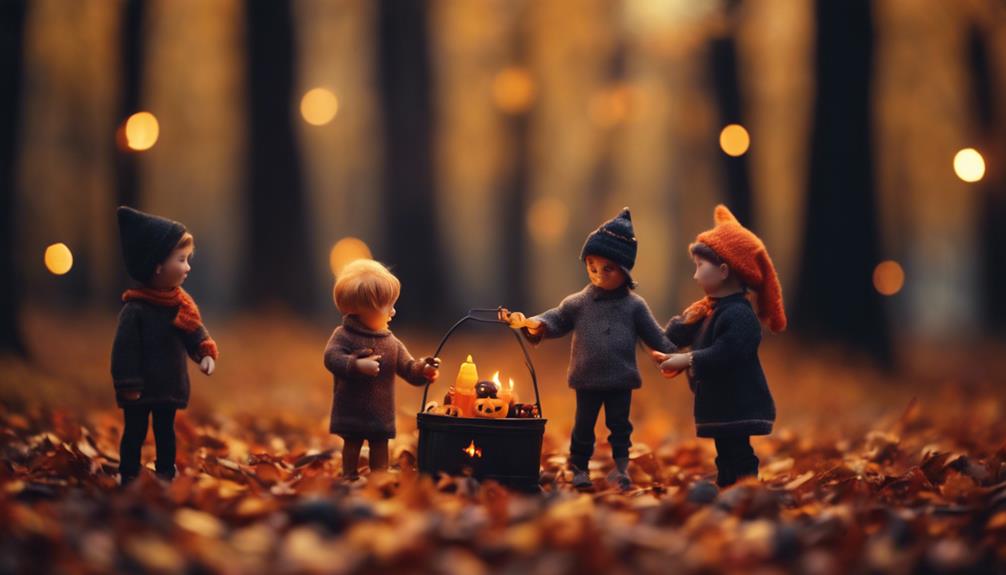
As German Halloween traditions continue to evolve, a blend of Americanized celebrations and traditional customs is expected to shape future trends in the country. Here are some potential developments you might see in the future:
- Commercialization: The commercial aspect of Halloween in Germany is likely to grow, with retailers capitalizing on the holiday's popularity.
- Blend of Traditions: Future trends in German Halloween traditions may include a continued mix of Americanized celebrations and traditional German customs.
- Increased Participation: Expect increased participation in Halloween-themed events and parties among all age groups as the holiday gains more traction.
- Decor and Merchandise: Halloween decorations and themed merchandise are expected to become more prevalent in stores and neighborhoods across Germany.
- Social Media Influence: The influence of social media and globalization may impact the evolution of Halloween celebrations in Germany, shaping future trends in costume choices and party themes.
These trends suggest that Halloween in Germany is likely to become even more vibrant and diverse in the years to come.
Frequently Asked Questions
Why Is Halloween a Holiday in Germany?
Halloween became a holiday in Germany due to its introduction in 1991 to compensate for canceled Fasching celebrations and stimulate retail sales. The holiday's rise in popularity could be linked to American influences or effective marketing strategies.
Despite some pushback from those favoring traditional St. Martins Day, Halloween thrives in Germany with adult-oriented costume parties and pockets of trick-or-treating. The country's embrace of Halloween is evident through its numerous themed events, demonstrating lasting appeal.
Why Don't Germans Celebrate Halloween?
Germans don't widely celebrate Halloween due to cultural differences. Only 18% join in, with younger generations embracing dressing up more than adults. It's uncommon for German workers to wear costumes to the office unlike in the US.
Trick-or-treating isn't popular, especially in cities. However, some expat communities in Germany have started to adopt Halloween traditions.
The holiday's limited popularity in Germany contrasts with its significance in other countries.
What Do Germans Hide on Halloween Night?
On Halloween night, Germans hide behind spooky costumes and masks to add mystery and excitement to the celebrations. By wearing elaborate disguises, they transform into different characters or creatures, embracing the spirit of the holiday.
Masks and makeup are commonly used to create a sense of intrigue and fun. The act of hiding behind costumes allows Germans to participate in festive activities while immersing themselves in the Halloween atmosphere.
What Is Halloween in German?
In German, Halloween is known as 'Halloween.' It's a fun and spooky holiday with traditions like dressing up in costumes, carving pumpkins, and attending themed parties. Kids say 'Süßes oder Saures' (Trick or treat) for candy.
The celebration in Germany has become more popular, especially with younger people. You'll see spooky decorations, themed events, and a mix of American and German traditions during Halloween in Germany.
Conclusion
To sum up, Halloween has become increasingly popular in Germany, with a surprising 40% of Germans now participating in some form of Halloween celebration.
The influence of Dieter Tschorn and the cultural adaptations have led to a unique blend of traditional German elements with the spooky festivities of Halloween.
As the holiday continues to evolve and grow in popularity among the youth, it will be interesting to see how German Halloween traditions develop in the future.
